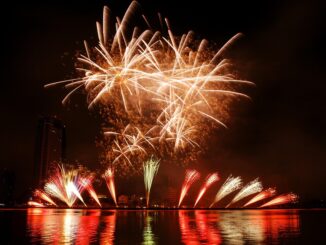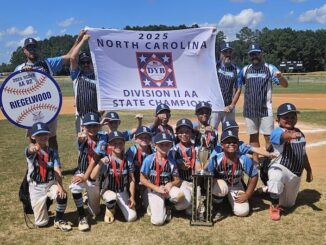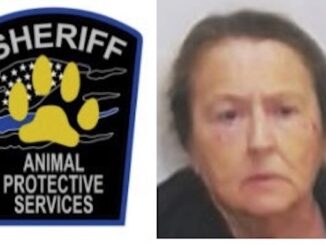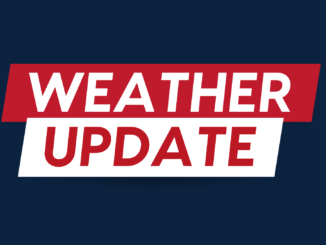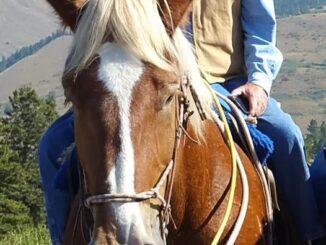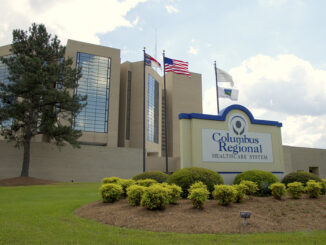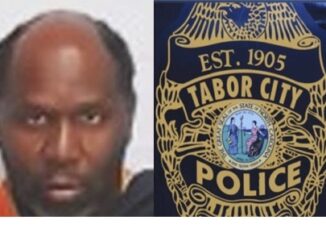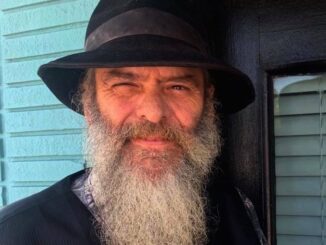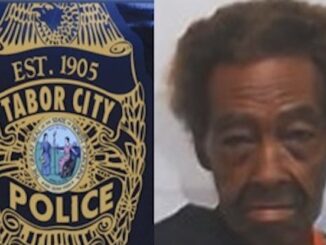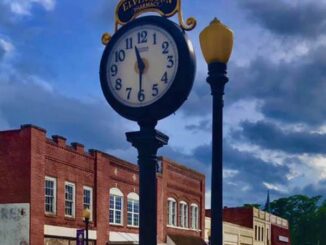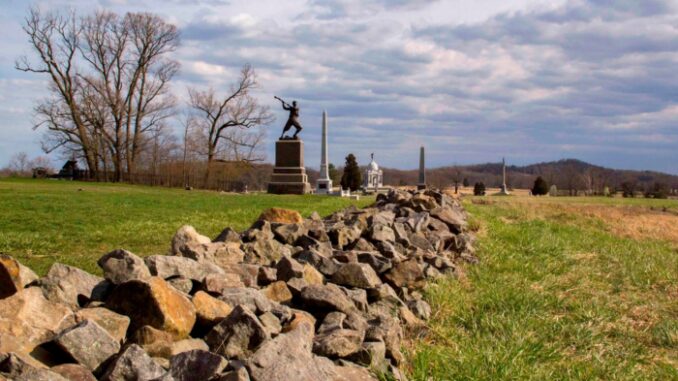
The things I take for granted are things they never knew.
I am writing these words in a comfortable, air conditioned office, despite the thermometer soaring to sinful levels. I had a good supper last night with my wife, plenty of coffee this morning, and have a choice of lunch. I’ll most likely sleep in a comfortable bed tonight, safe in my home.
It’s hard for us to have a perspective of those who went before us when we think about the coming holiday weekend, Independence Day, July 4. It can be even harder when we think about the events leading up to the days before July 4, 1863. After all, it was 160 years ago this week.

That desire to understand my ancestors was one reason I was once a reenactor, a living historian as we preferred to be called. After a couple years in the hobby, I drifted more and more toward the “had core” or authentic side of reenacting. I found folks who had more of the same deep desire to understand everything about our ancestors, whether they fought for the North or the South. I had folks on both sides, by the way, although most were Southrons, a quaint, forgotten word now often looked upon with disdain.
Near as I can tell, none of my family owned slaves at the outset of the War Between the States; several had before the war, most never had any, but times were already changing. Those who did still had former slaves employed in their households. As a child, my father was cared for by the daughter of a woman born into slavery. Even after receiving their freedom, her parents stayed on with the family, as paid employees.
One kinsman actually got in trouble because of his treatment of slaves and freed blacks – and before you unfurl that “racist” banner to wave at me, you should know he was jailed by officials in Washington City for providing the same level of health care that he did white patients.
I am not, under any circumstances, defending ownership of other people. It’s horrifying to me. At the same time, it’s horrifying to judge folks long dead by the standards we now consider right.
The men in my family who served the Confederacy didn’t fight for slavery. The ones who left a written record fought for the freedom from what they saw as an ever-more intrusive, corrupt government. They fought for their homes, their families and towards the end, the friends who stood beside them. At least one, maybe a couple of them, likely couldn’t read or write, so I don’t know their motivations. They left no record.
Again, something we take for granted, that they never knew.
I knew of the Battle of Gettysburg only through books, and stories retold by my father, stories that he heard at the knee of his grandfathers and his uncle, my great-uncle Tom Traylor. Later, I was able to get hold of some precious letters, newspaper articles and diary pages written by Captain Traylor.
He referred to the best-known battle of Gettysburg, the field at Pickett’s Charge, as the “Field of Pain and Sorrow.”
The desire to see and feel something that Captain Tom and some of the others may have known was one reason I made extra efforts to make it to Gettysburg that year. Four of us rode up in a friend’s van, driving through the night and camping out in a grass parking lot in the town of Fairfield, next door to Gettysburg. When we awoke in the morning, we discovered we were almost under a local historical marker describing how the vacant lot had been the site of a Confederate hospital after the battle, and the dead were lined up for burial about where we lay.
Later, we went to the National Battlefield Park, stoked with a good breakfast, hydrated, and motivated. We were going to cross the field where Pickett’s Charge had taken place, despite the fact that the field was overgrown at that time. We couldn’t carry our muskets, of course, but otherwise we were equipped and dressed as had been the men who destroyed a corn crop and made Gettysburg famous back in ‘63.
We weren’t far into the high grass when we realized we may have made a mistake. Our canteens were banging empty on our hips before we were halfway through the thick grass. The creek at the bottom of the field threatened to tear off our handmade brogan shoes, and it left our high-end reproduction wool socks slippery, slimy and soaking wet.
We weren’t being shot at, of course, the battlefield being a much more peaceful place today, but the effort took its toll on all of us. Walking a mile on a sidewalk or even a dirt trail is nothing compared to a mile through head-high grass with invisible pockets of water, on a day when the temperature has already touched 93 at 10 a.m. and you’re wearing a fabric made of cotton and wool, with a blanket roll, cartridge box, bayonet, canteen and haversack slung from your hips and shoulders. Even without a ten-pound musket and six pounds of live ammunition, our soft lives shone as we gasped and staggered along. I wondered if any of those who passed before us also gratefully gulped handfuls of water from the creek, or soaked their neck rags, before continuing toward the split rail and stone fence across the road.
Our goal was the North Carolina monument, where troops from our state earned the moniker “Farthest at Gettysburg.” We three got separated, but we broke through the tall grass at about the same time, stumbling into a mowed portion of the field, even though we were far apart. Our ride was waiting nearby.
I turned out to be the closest to the marker, and my steel heel plates tapped dull on hot pavement laid long after the noise of the regular world replaced the shots, screams and curses of the men who died there.
The marker wasn’t as impressive as so many others on the field. I was a little disappointed, I guess. I stood for a moment looking at the simple monument, something that wouldn’t have been out of place on a property line, or in a family cemetery.
Then a bus load of tourists began yelling, cheering and clapping, wanting me to turn their way for photos. They were cool, happy, and having the time of their lives. Apparently seeing three Confederate soldiers emerge from the overgrown field like ghosts was the high point of their lives.
It angered me.
I stood there with tears in my eyes, scratched and bloody from the grass, my pants muddy, my shoes sopping wet, thinking of those who had crossed that field before, under other circumstances. They, too, got separated from their friends, but my friends were waiting for our air-conditioned van with its cooler of water and Gatorade. Some of those men never saw their friends again, unless they were on a burial detail.
These people were smiling, laughing.
They didn’t understand the sacrifices on both sides of that fence. Truth be told, I couldn’t, either, but I was able to enjoy the freedom that ironically, both sides fought for. It broke my heart to think of these men, some of them a decade or more younger than I was on that hot day, standing and dying beside their friends and family in a battle line, shoulders sore from recoil, eyes smarting from smoke, teeth blackened from tearing open paper cartridges that were then shoved down the muzzle of a rifled musket and fired with a percussion cap placed by shaking fingers scarred from thousands of the thin copper caps.
They were men who would never see their families again, never feel the warm earth turned by a plow, never again know the kisses of their wives and children, the feel of a horse between their legs, hear the bay of a coonhound on a crisp night, enjoy the camaraderie of friends in a tavern, or the joy of worshipping in a church on a Sunday morning.
I looked back across the field, and thought for a moment how so many men died or were ruined, and how our country, the greatest country ever made, was almost riven in two.
Then I understood, as best as any of us can, why my great uncle Captain Traylor called it a Field of Pain and Sorrow.




